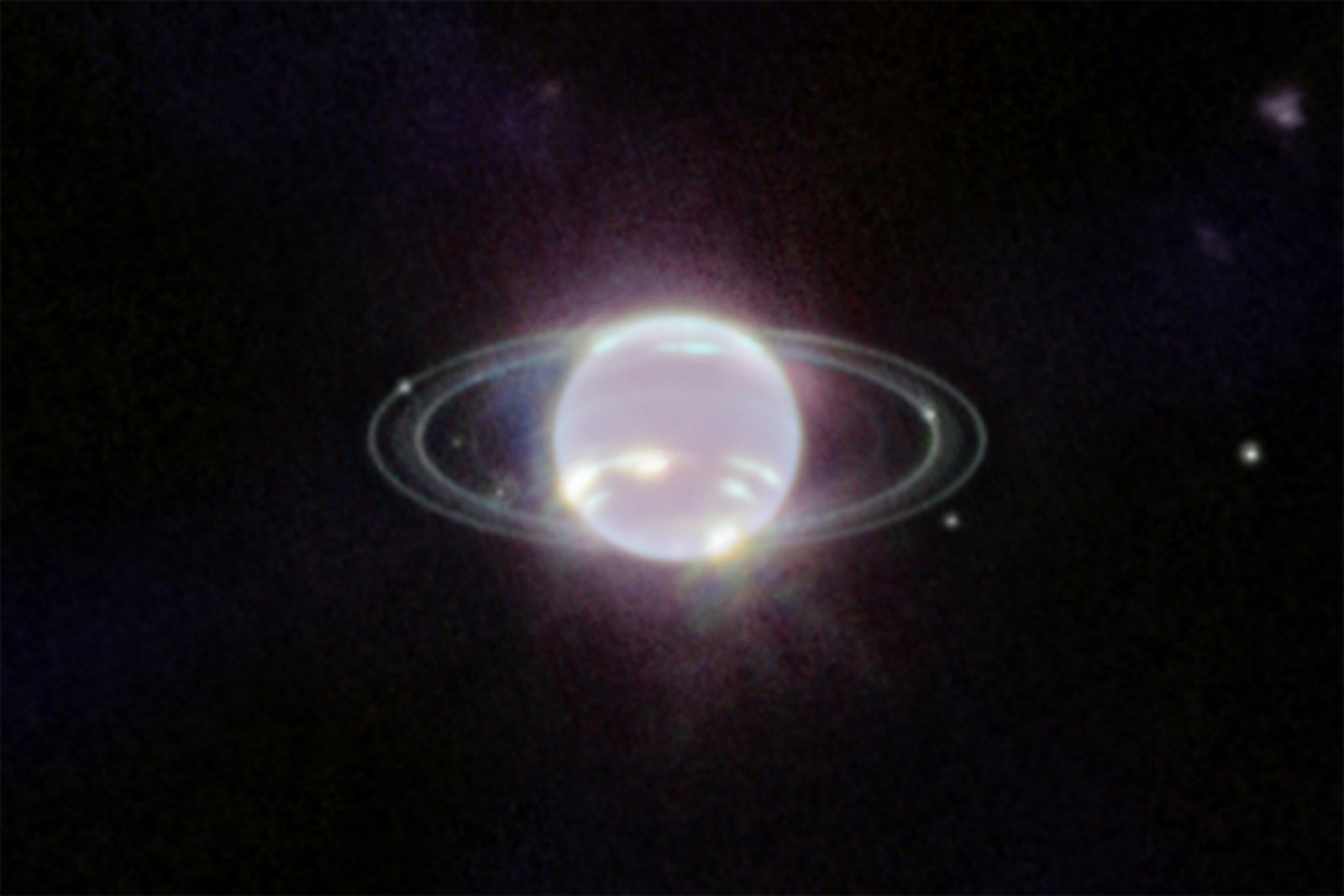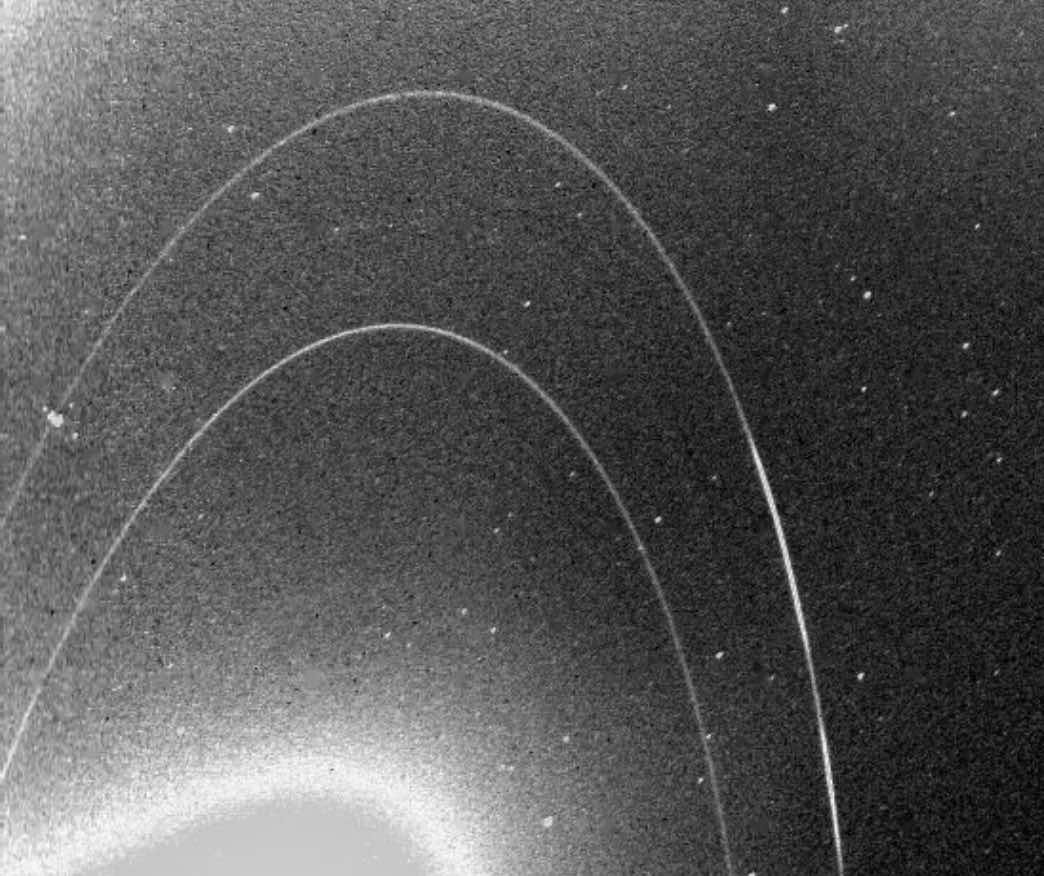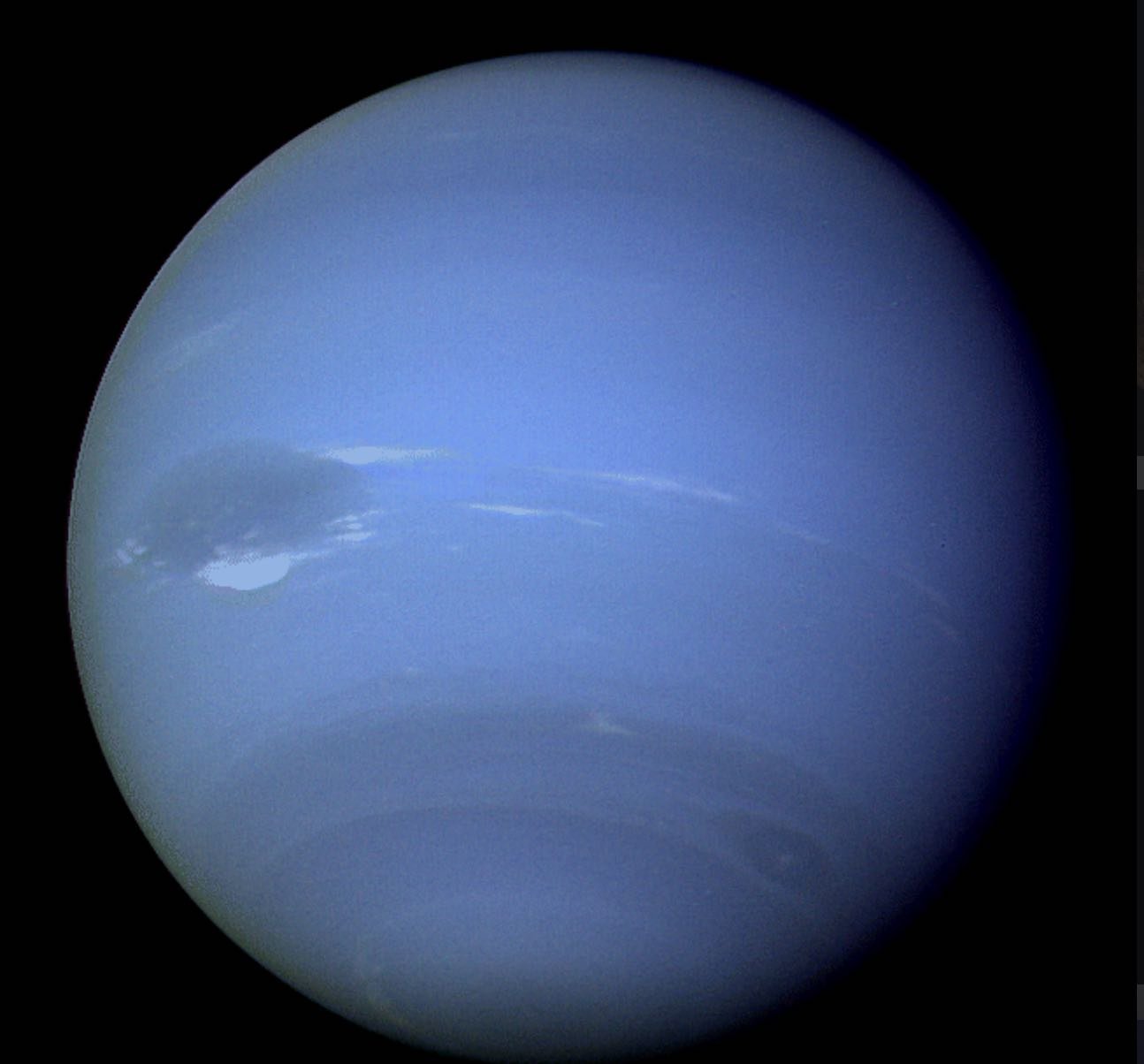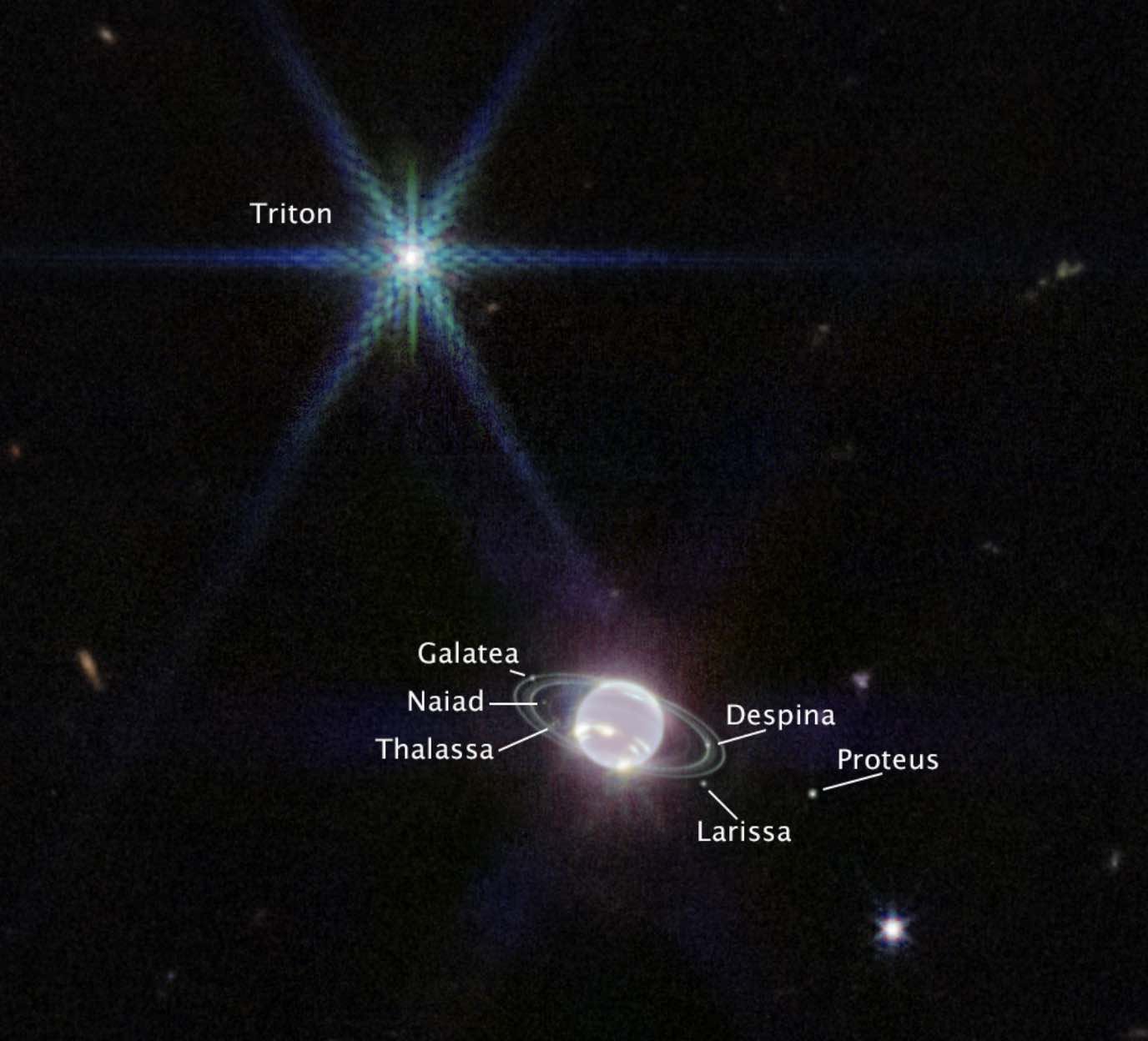

Welcome to this week’s installment of The Intelligence Brief… as new images from the James Webb Space Telescope continue to set new precedents in our ability to observe the cosmos, this week we’ll be looking at 1) striking new images of Neptune’s rings captured by Webb, 2) what makes the fourth-largest planet in our solar system an ice giant, 3) how Webb’s unique infrared imagery allowed the new striking images of Neptune’s ghostly rings, and 4) other features, and a few oddities, captured in the new photos.
Quote of the Week
No one planet can tell us everything about the universe, but Neptune seems to hold more than its share of information about the formation of our own solar system – as well as the solar systems beyond.
– Heidi Hammel
Before we get into the thick of what has NASA’s Webb team—and the rest of the astronomical community—talking about Neptune, a few of the stories we’ve been covering in recent days at The Debrief include Tim McMillan’s recent deep dive into the dark world of government secrecy, where he offeres a primer in the U.S. government’s system of classified information. Elsewhere, Chris Plain reports on a recently fallen meteorite containing water that is undeniably extraterrestrial has been found for the first time in the U.K. Also, MJ Banias explains why a “ghost ship” loaded with 1.14 million barrels of oil could soon play host to one of the world’s greatest environmental disasters.
Now, with business all out of the way, it’s time to dive into what we’re learning from the latest round of images from the James Webb Space Telescope, and what they’re revealing about one of the most unusual planets in our solar system.
Neptune’s Ghostly Rings Are Caught by NASA’s Webb
In recent days, the world was treated to the latest fruits of the James Webb Space Telescope with a set of stunning images of Neptune and its moons.
For the first time in more than three decades, the planet’s moons were revealed in vivid detail, showcasing a planetary feature most commonly associated with Saturn, whose distinctive rings are far more easily visible from Earth even with minimal telescopic aid.


Neptune’s rings are themselves a relatively recent discovery, having been first detected in 1984, and thereafter imaged by the Voyager 2 spacecraft five years later in 1989. Although visible under the right conditions, the planet’s faint rings are more similar to planetary rings also detected around the gas giant Jupiter.
However, thanks to the James Webb Space Telescope, we now have the clearest images of the Neptune’s ghostly rings that we’ve seen in years… and that’s only the beginning of what NASA’s premiere space observatory has begun to reveal about our solar system’s desolate ice giant.
On the Trail of an Ice Giant
Since its discovery in the mid 19th century, Neptune has remained a focus of astronomers both for its appearance, and its location. Planted in orbit 30 times further from the Sun than Earth, Neptune rests an average distance of 2,794 miles from our local star, where the distant sunlight that strikes its atmosphere at high noon looks no brighter than an evening sky just after sunset.
Possessing an equatorial diameter of more than 30,200 miles, it is the fourth largest planet in our solar system, and like its three massive siblings, it also boasts a faint set of rings which Webb’s impressive optical capabilities managed to recently capture in striking detail.


Due to the unique chemical composition of its planetary interior, Neptune is designated an ice giant, mainly on account of the abundance of heavier elements found there. This accounts for the planet’s characteristic bluish hue, which becomes amplified by remnants of methane that linger around the planet and conveyed in visible wavelengths, most notably in previous imagery captured by Webb’s predecessor, the Hubble Space Telescope.
However, now that Webb is fully operational, it is already providing a new perspective on Neptune and its appearance, which includes the striking manifestation of its rings in the recent images released by NASA.
Into the Infrared
Neptune system expert and Webb team scientist Heidi Hammel says that part of what makes the latest images so exciting is that they mark the first time Neptune’s rings have been imaged in the infrared.
“It has been three decades since we last saw these faint, dusty rings,” Hammel said in a statement, “and this is the first time we’ve seen them in the infrared.”
One of Webb’s most exciting imaging technologies is its Near-Infrared Camera (NIRCam), which grants astronomers an opportunity to perceive distant regions of our universe at wavelengths that Hubble and ground-based telescopes aren’t capable of. Because the NIRCam collects light within the near-infrared visual range of between 0.6 and 5 microns, many space objects that it visualizes look strikingly different through Webb’s eyes.
Case in point, Neptune’s characteristic bluish coloration is absent in Webb’s newest photos, appearing instead as a dark planetary mass since methane absorbs light at infrared wavelengths. Brighter regions apparent in the photos are the result of cloud formations surrounding the ice giant, which have been observed with the aid of other telescopes over the last few decades.
Rings, and Other Things
However, the most apparent feature revealed about the planet in the new Webb photos is the presence of its rings, which at infrared wavelengths appear in striking detail, the likes of which astronomers have not managed to photograph since 1989.
Among the other unique features Webb managed to capture in its images include a vortex at the planet’s southern pole, along with a “continuous band of high-latitude clouds surrounding it” that NASA characterizes as a JWST first.
The new images also feature Neptune’s 14 moons, with the particularly stunning appearance of Triton, whose light gives rise to a vivid series of diffraction spikes as seen by the Webb telescope.


“Triton reflects an average of 70 percent of the sunlight that hits it,” read a recent NASA statement, noting that due to Neptune’s methane clouds absorbing the infrared light it reflects, Triton by comparison appears particularly striking and starlike. The moon is notable for several odd features, among which are its retrograde orbit.
Although Webb was designed with the specific ability to study the distant universe in strking new detail, the latest batch of images collected by NASA’s newest space telescope clearly show that we’ll likely be learning more about those celestial objects closer to home in the years ahead, and observing features both known, and unknown, in striking visual clarity.
That concludes this week’s installment of The Intelligence Brief. You can read past editions of The Intelligence Brief at our website, or if you found this installment online, don’t forget to subscribe and get future email editions from us here. Also, if you have a tip or other information you’d like to send along directly to me, you can email me at micah [@] thedebrief [dot] org, or Tweet at me @MicahHanks.


Here are the top stories we’re covering right now…
- It’s Classified! A Deep Dive Into the Dark World of Keeping Secrets
The Debrief takes a deep dive into the dark world of government secrecy, including everything to know about the system surrounding classified information.
- Experts Say Extraterrestrial Water Has Been Found Inside This UK Meteorite
A recently fallen meteorite containing water that is undeniably extraterrestrial has been found for the first time in the U.K.
- This Ghost Ship Could Cause Earth’s Next Greatest Environmental Catastrophe
Loaded with 1.14 million barrels of oil, the FSO Safer is quickly falling apart, and could soon play host to an environmental disaster.
- To the Moon, and Beyond: The Realities of Commercial Space Travel
If commercial space travel eventually becomes more widely accessible, there will be significant challenges for individuals looking to buy their ticket to the final frontier.
- Could MIT’s MOXIE Device Be the Future of Oxygen Production on Mars?
MOXIE, an experiment by MIT and NASA currently on board the Perseverance rover, aims to help find ways to produce oxygen in Mars’ atmosphere.
- Physicists Prove You Can Make Something out of Nothing by Simulating Cosmic Physics
A team of physicists has proven a 70-yr old quantum theory that says something can be created out of literally nothing
- Axiom Space awarded $228.5 Million Contract for Building NASA’s Next Generation of Spacesuits
NASA has announced that it has awarded Axiom Space a large contract to aid in the development of the next generation of spacesuits.
- Reality On Demand: Why Humans Are Not Scientific Detectors
In today’s popularity contests, it is important to remember reality is whatever it is, irrespective of how many “likes” it gets on Twitter.We don’t get whatever version of reality we desire “on demand.”
- SHERLOC Investigates Red Planet Puzzler at Wildcat Ridge
This week, the Perseverance rover’s SHERLOC instrument has made potentially promising discoveries in an ancient delta that may help unravel a Martian mystery.
- 100-Foot Wireless Transmission of Electricity Achieved With Lasers in Breakthrough Study
South Korean researchers have successfully transmitted electricity nearly 100 feet through the air using lasers.
- Could Microbreaks Help Relieve Employee Burnout?
Looking at microbreaks, or breaks of less than 10 minutes, researchers found these breaks to be helpful in staving off burnout.
